Your handy 1928–31 Ford Model A buyer’s guide
It’s been said that Henry Ford, a man so in love with the vehicle that made him a household name, was so infuriated with any changes to the original Model T that he destroyed a prototype sporting relevant and timely upgrades.
Even after the T had undergone 10 years of production in a rapidly changing market, the elder Ford was dogged in his convictions. This moment of destruction was put onscreen in the 1987 movie Ford: The Man and the Machine.
Clearly, the ending for any successor to his masterpiece wasn’t gonna be pretty.
But the market was indeed changing, and Henry had no control over General Motors’ devouring of Ford’s market share. Competition was now a threat, with multiple manufacturers selling products with more power, added refinements, and more standard features.
If Ford wanted to remain in the position of market leader, the company needed to act fast. But while Edsel Ford was president of Ford Motor Company in 1919, it wasn’t until 1927 that a more relevant replacement to the famous “T” made its debut.
Enter the Model A.
To read Kyle Smith’s article on the joys of driving and owning a Model A, click here.
The new Ford vehicle was such a monumental shift because it introduced the notion of styling as a competitive marketing tool and performance improvements that were tested/refined.
To build it, all Ford factories were temporarily shut down globally for a massive investment in retooling and retraining. The total bill for all this effort was approximately $100,000,000 in 1927, or over 1.5 trillion dollars when adjusted for inflation.
Background
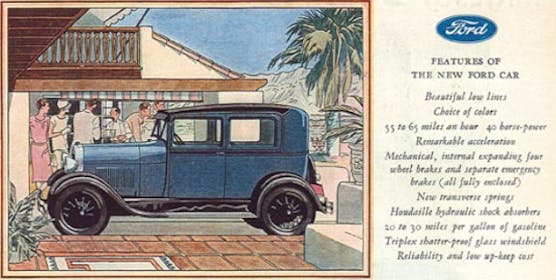
Aside from being the first Ford product to wear the iconic “Blue Oval” emblem, the 1928 Ford Model A shared a name with the first vehicle made by the Ford Motor Company, the Model A of 1903–04. But that’s about all it shared with the first A, as sales literature for the 1928 model said the A was all new “from radiator cap to rear axle.”
The changes showed, too, as the new “A” sported a longer wheelbase, a longer overall length, and a lower height. The car was indeed lower-slung than the competition, yielding a more mature stance that was further aided by sleek, steel-spoke wheels as standard (on the outgoing Model, the steel numbers were optional).
The Model A’s mechanicals were also improved, with a larger, 200 cubic-inch engine rated at 40 horsepower. Hand cranks were a thing of the past; electronic starters were now standard. The transmission now had three speeds, while four drums handled braking maneuvers far better than the Model T’s transmission affair.
While Ford kept the Model T in production a little too long, the new Model A exceeded management’s expectations. A reported 10.5 million customers came to see the Model A upon its introduction: a strong showing in today’s market, but roughly 10 percent of America’s population at the time! After the first two weeks, dealers secured deposits for over 400,000 Model As, and overall sales topped 4.8 million units.
A slew of body styles were available, ranging from trucks, sedans, coupes, and convertibles of distinct configurations. One of the more noteworthy examples is the “400A” body, which was a two-door, four-seat convertible with fixed pillars.
It should come as no surprise that the successor to the car that put America on the road did so well. And that’s precisely why it is still popular with 21st-century motoring enthusiasts, both in stock and modified forms.
Charting the changes
While all Model As may look about the same for the four model years of production, there are actually three distinct generations of the breed.
The first is comprised of the early Model As, those built from December 1927 to June 1928 and known as the ARs. Next are the 1928–29 cars, and finally the examples made from 1930 to 1931. While there is no well-defined way to distinguish an AR from a later example, these early Model As often sport the combination of a “powerhouse” generator, a uniquely located hand-brake (next to the driver’s kick panel, not near the shifter), and a red steering wheel.
It is far easier to tell the difference between 1928–1929 and 1930–1931 examples. The second-generation A has curved sheetmetal at the cowl (between the hood and the doors); the contour on later models is more linear. Earlier (1928) Model A Roadster, pickup, and Phaeton bodies lack outside door handles, but 1929–31 Roadsters and Phaetons have them. Wheels also changed across the years: 1928–29 As sported 21-inch wheels, while later models wore 19-inch ones with larger hub caps.

The front bumpers changed, too. Earlier Model As have a round front bumper clamp, which later became oval, and a concave curvature at each end (this later became gently curved across the whole bumper).
Earlier radiators are shorter and wider, and made of nickel. Later radiators are stainless steel. The 1930 Model A had a fully polished radiator shell, while 1931 sported reliefs with painted inserts.
Even the headlights changed, from vertical fluted lenses in 1928 to Twolite branded lights in 1929, when the lamp shape morphed from acorn to cup. The headlight bar, which connects to the fenders, also went from straight on the first models to curved in later Model As.
Taillamps were shaped like drums in 1928; 1929+ Model As sported a tea-cup shaped light that was mounted on the fender instead of the body.
The Model A’s interior received running changes too, most notably in the instrument panel. While that in the 1928–1930 car is shaped a bit like a diamond, the 1931 cluster has a more oval theme with horizontal ribs and a rounded speedometer.
Before you buy

The problem with the information presented above is that many of these changes happened mid-cycle in production, so getting an accurate picture into a Model A’s originality may be murky. The Model A Ford Club of America (MAFCA) can provide a clearer picture of a Model A’s proposed authenticity, and consulting a local chapter might provide you with priceless feedback. But assessing a vehicle’s condition is always a complicated affair, even more so when said vehicle is over 90 years old.
It’s best to consider that issues in body, interior, and powertrain are more likely to stem from a poor repair over the years and not from a built-in flaw. Rust is always an issue in a vehicle this old, but replacement sheetmetal is plentiful.
Look very closely at all aspects of the body and chassis, as you may never know how many different cars were welded together decades ago to create the one that’s currently sparking your interest. Any and all parts for the Model A are readily available from multiple vendors, with the exception of new wheels and tires, each of which get expensive very quickly.
Your biggest concern is probably the engine. An unhealthy short-block may need rebuilding, a complicated and cost-prohibitive process that involves re-pouring the Babbitt bearings in the reciprocating assembly. This process can be seen in detail in the following video:
Shoddy bodywork, questionable rust repair, or connecting rods that need Babbitting—a Model A for sale on the internet could have any or all of these flaws, each of which demands a significant amount of work. Metalwork aside, rubber parts (tires, belts, bushings, hoses) can turn into significant expenses, if they are worn out by UV exposure and/or dry rot. Buying an example in your budget with the most documentation and service records is highly recommended, though readers with significant DIY metalworking skills can easily address many concerns.
With the exception of the complicated bottom-end bearings, mechanically Model As are still quite simple and DIY-friendly, according to Hagerty editor Kyle Smith, who owns a 1930 coupe. Both parts and knowledge are easily found, making the Model A an excellent starting point for anyone interested in a true antique car. Smith states that, when properly sorted, these cars can tour with minimal attention. Getting one sorted can be simple as following the steps in one of the many Model A “how to” books, which present tasks so that even fresh mechanics can succeed with minimal outside guidance.
Let’s discuss what to look for when taking a potential candidate out for a spin.

On a test drive, check to ensure the Model A runs smoothly, drives straight, shifts smoothly (remember to double-clutch!), and has no visible exhaust smoke. Hawk Hawkins, Hagerty Price Guide support specialist, reminds us that Model As “were made for shorter people and the stock seat mounts do not offer a way to move the seat forward. “If you are tall, you should definitely test drive to make sure that you actually fit in the vehicle.”
He also notes that safety equipment, like “turn-signals, brake lights, or seat belts,” are not original to the Model A but have been “recognized as acceptable by judging standards.” Speaking of safety, Hawk warns us about test driving at higher speeds, especially for Model As equipped with an overdrive transmission:
“Some Model As have an overdrive [gear] to allow them to be driven at higher speeds (50–60 mph). One should note, however, that just because the can can be driven faster does not mean that it should be.
“Thin tires, old brakes, and (outdated) brake technology render faster speeds hazardous to your health.”
What to pay

While you’re likely to get a fair approximation of a car’s market value by looking for comparable sales online, Model A values are more dependent on originality and authenticity, things not often detailed in an online posting.
With that in mind, Hawk Hawkins reminds us to look for the “cobbling together of improper parts” when assessing the value of a Model A, as items like a “red steering wheel on anything other than an AR—an A built between December 1927 and June 1928—will impact its value.
Hawk mentions that ARs are generally worth more than any other generation, but the median #2 value for all Model As is currently $32,000. Hagerty pricing data goes back to the end of 2016, when the median #2 value was significantly lower, at $19,100. The most valuable Model A in the Hagerty Price Guide is a 1929 Town Car, while the least is a 1928–29 Business Coupe.
We have seen John Dillinger’s Model A coupe sell for a record $165,000, while Dick Flint’s cover car for Hot Rod magazine fetched a whopping $577,500.
While vehicle condition is paramount, Hawk reminds us that body styles matter: “Roadsters and Phaetons are worth more than coupes, which are worth more than Tudor or Fordor models. Some body styles, like the Victoria, were made in very small numbers and therefore command a premium.”
He also notes that Model A trucks, in either open- or closed-cab configurations, are worth as much as Roadsters if “in decent shape and with correct components.”

Hagerty has seen a 17 percent increase in Model A quotes over the last three years, making it our eighth most insured car. Unsurprisingly, these cars are disproportionately popular among older buyers.
Preboomers quote 15 percent of Model As, but only make up 5 percent of the market. Boomers quote 49 percent, with 35 percent of the market. The youngest two generations we track, Millennials and Gen Zers, are the least interested in the A: Respectively, they account for 11 and 1.5 percent of quotes, with 21 and 7 percent of the market.
Comparatively, Gen X is the youngest generation with the most interest in the A, quoting 24 percent of Model As even though it comprises 32 percent of the market.
Truly the Ford Model A is an evergreen classic. Time has been kind to these vehicles, but of course, you should buy the nicest one you can afford, with the most extensive service history you can possibly find. While some tasks are affordable and easy to address, re-Babbitting the engine is clearly not one of them.
Take your time and find the right Model A for your needs and wants, and you won’t regret your decision.
Check out the Hagerty Media homepage so you don’t miss a single story, or better yet, bookmark it.

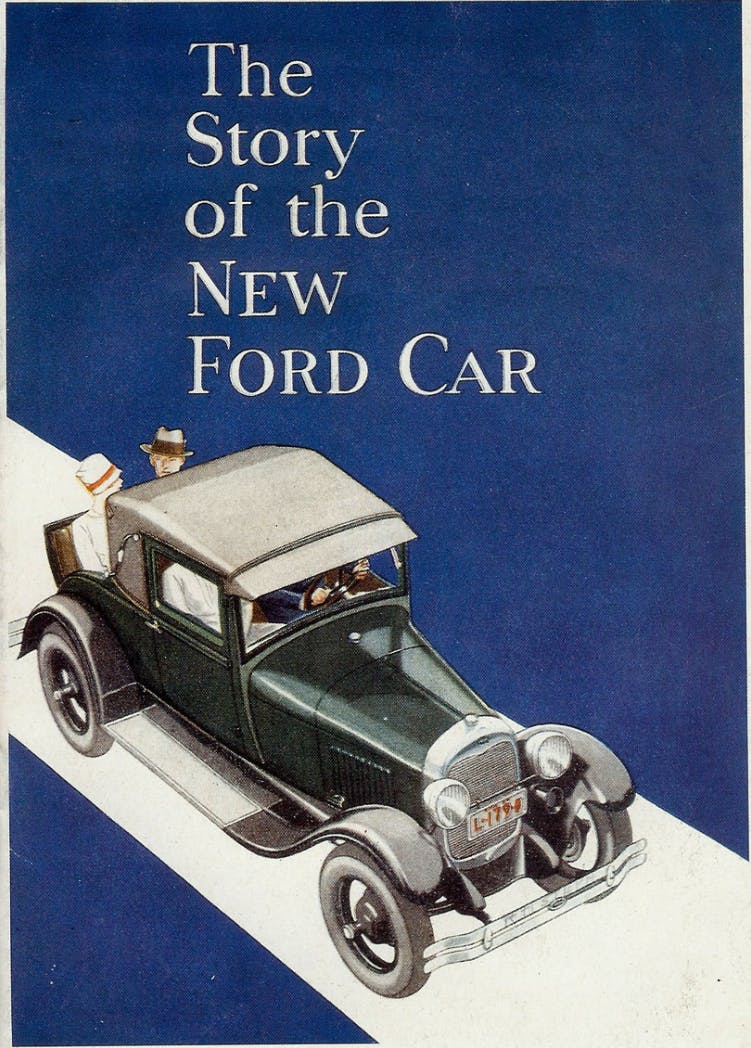
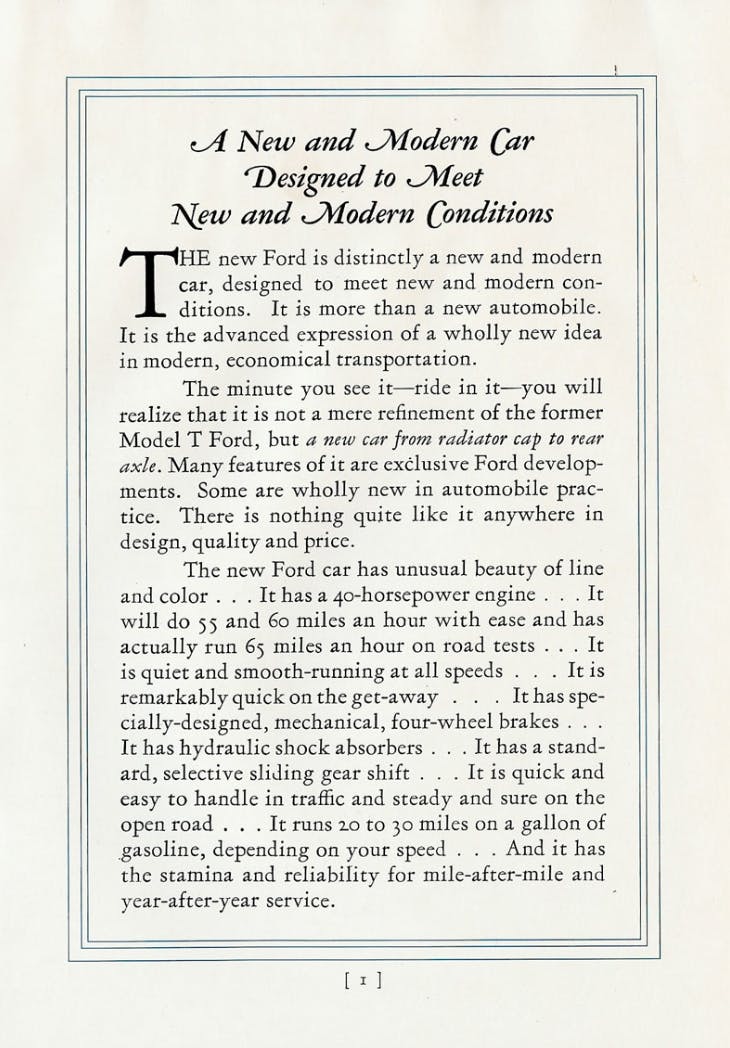
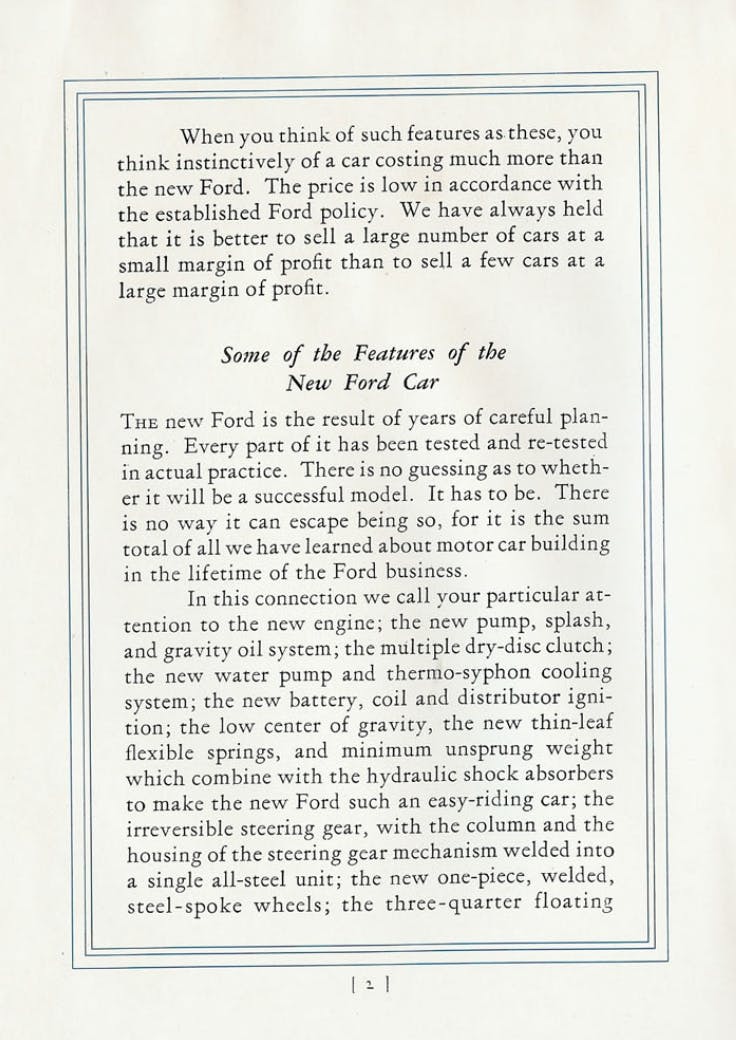

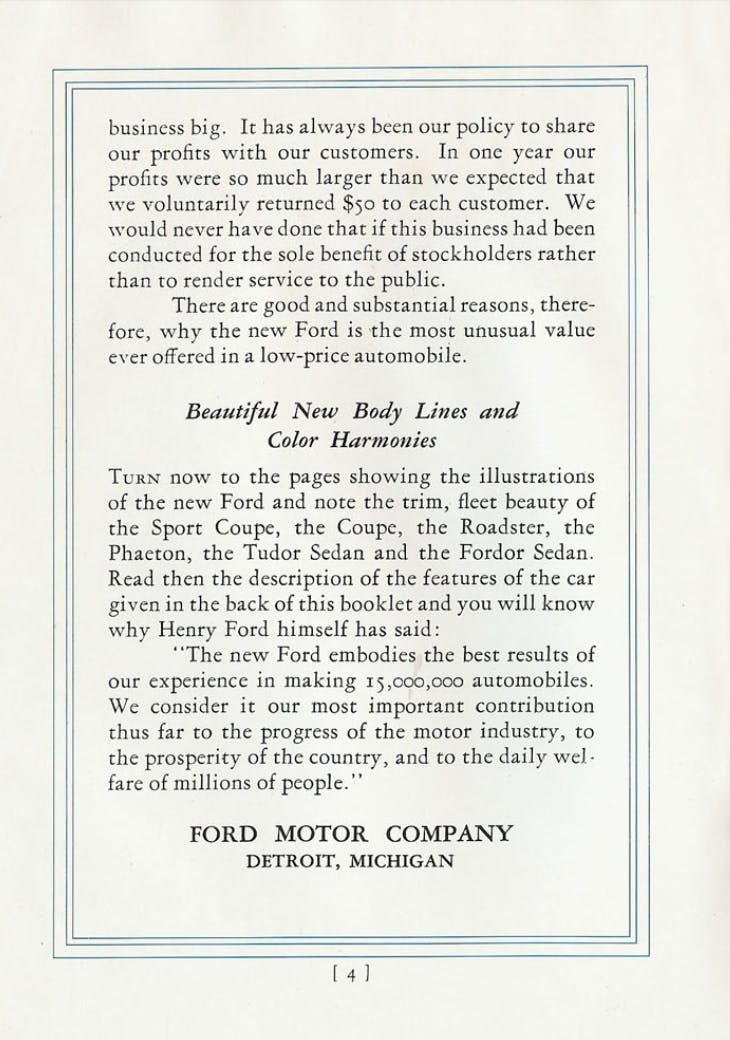
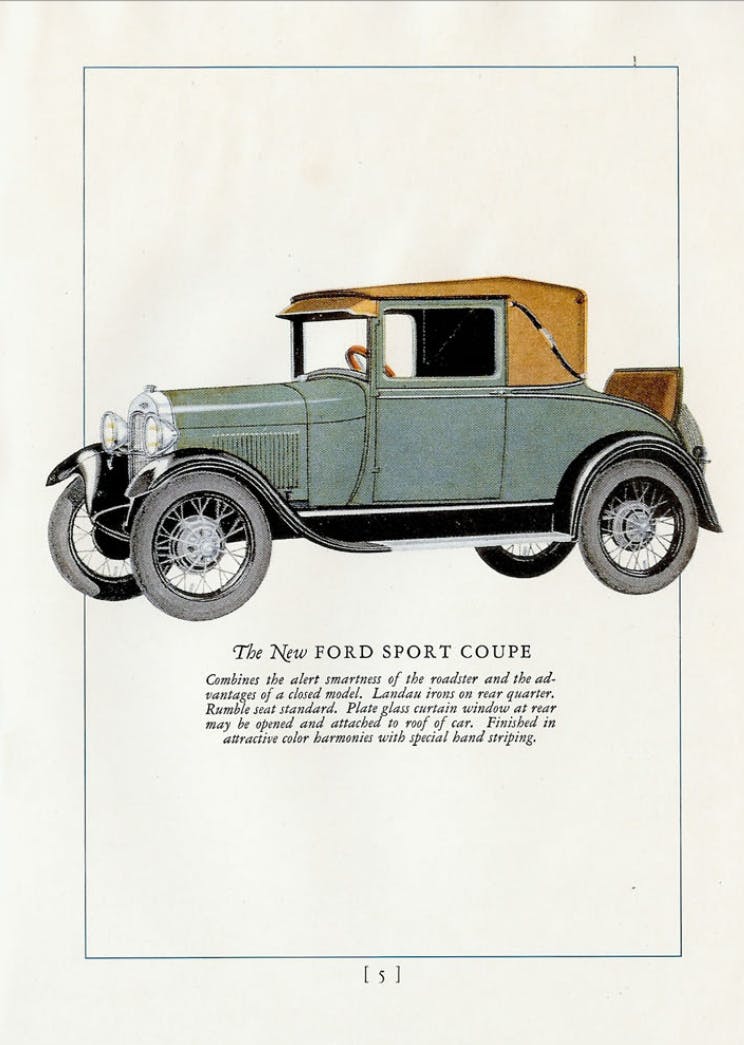
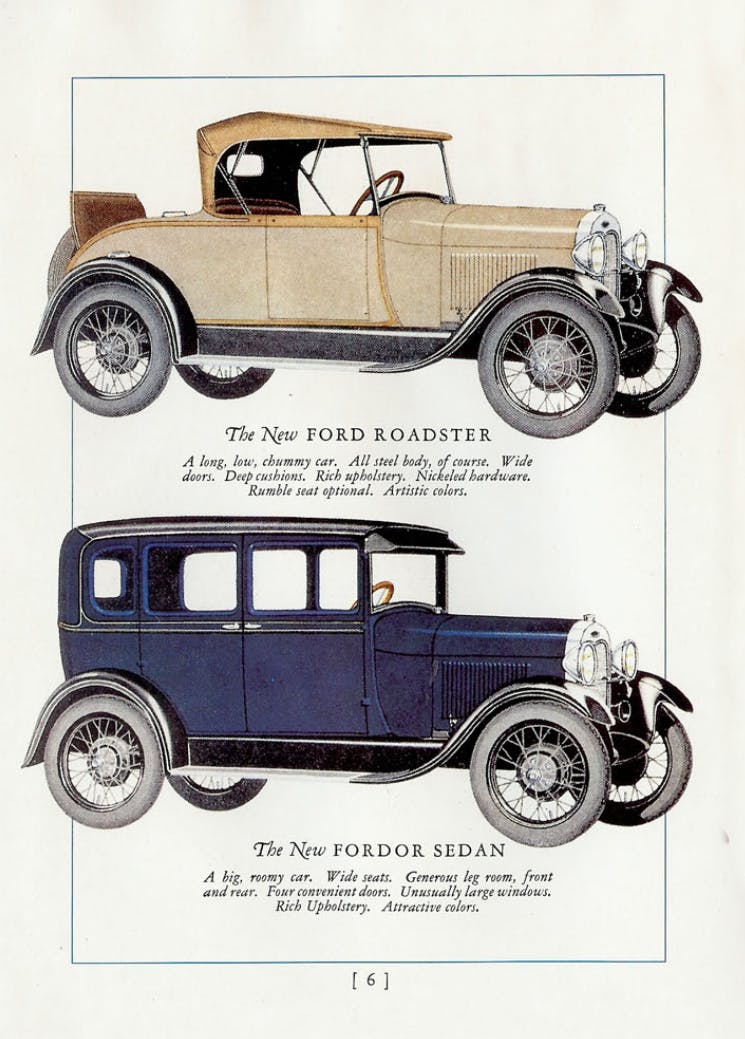
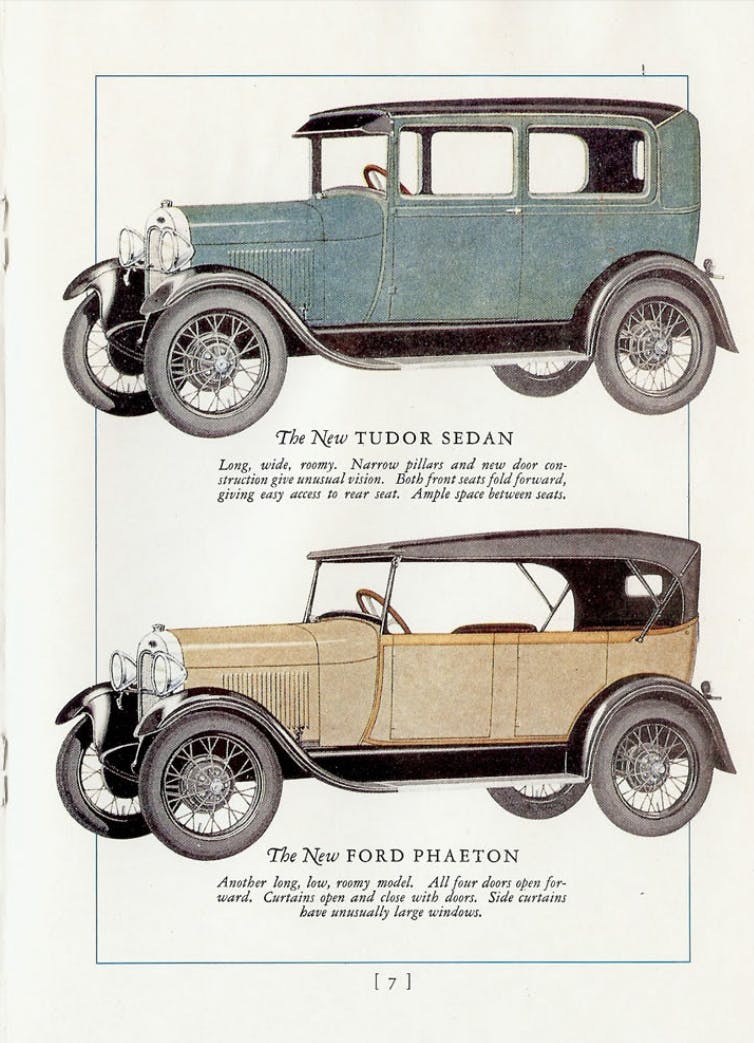
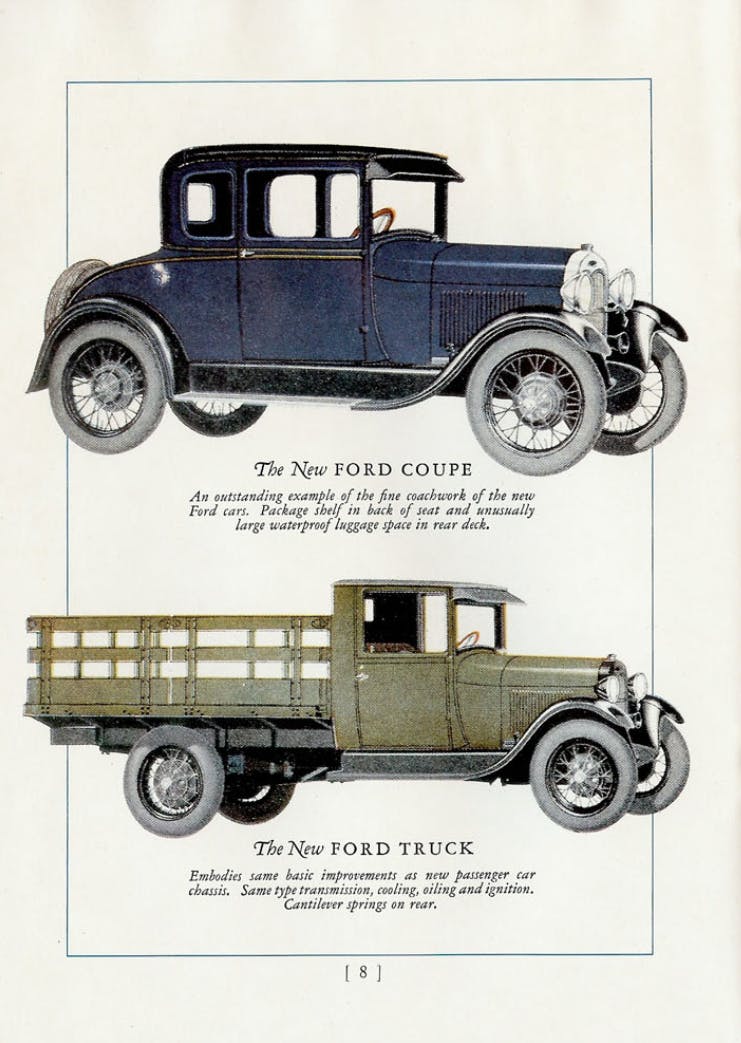
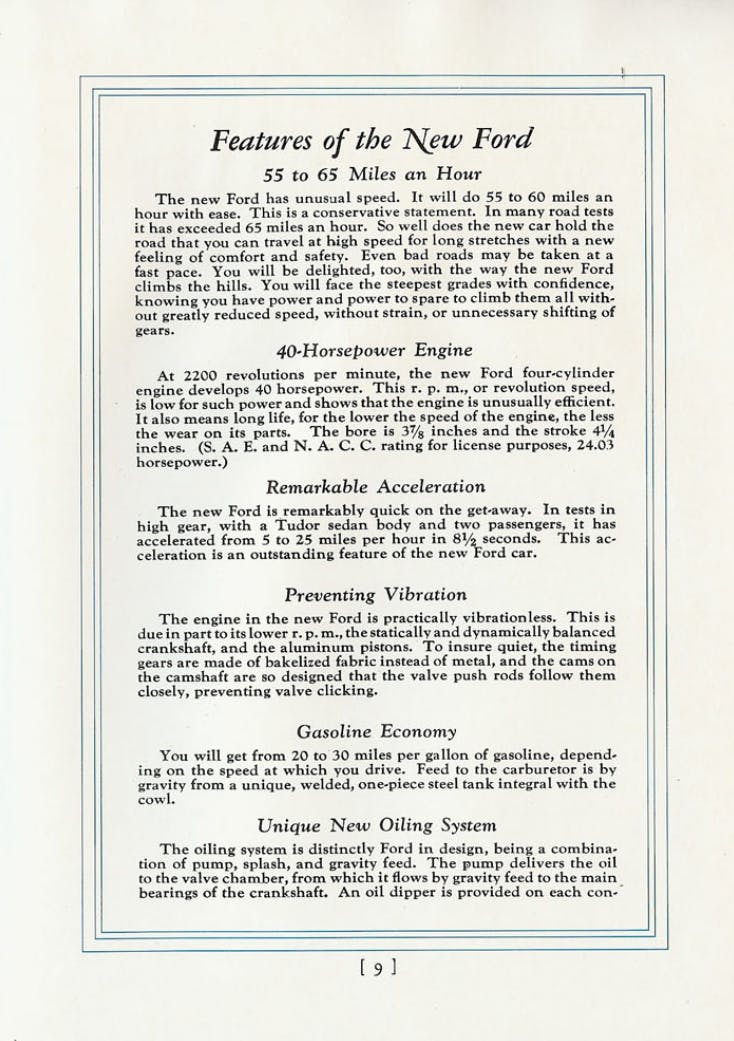

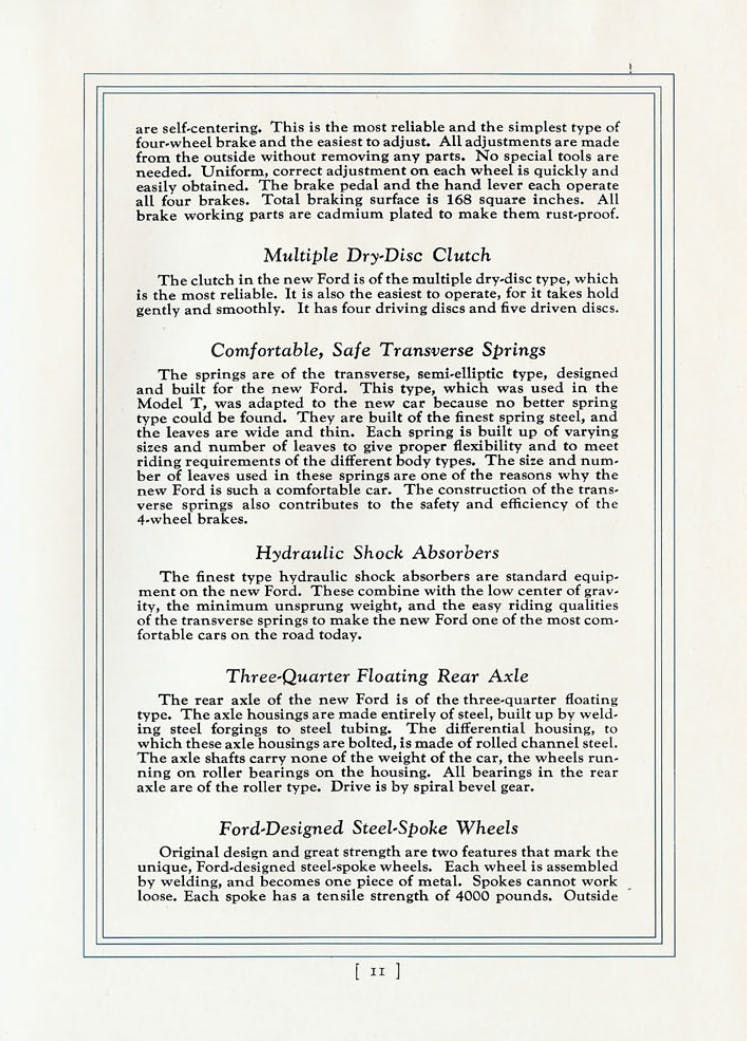




Believe it or not, Ford offered reproduction Model A’s in 1978-79, from a few of their own dealers!
They were built on Mustang II chassis’.
I even considered buying one.
Oh yes! I thought about bringing that up in the article, but it felt like it’d take away from the mission of the article. But everyone should learn about the Shay Motors Corporation: https://en.wikipedia.org/wiki/Shay_Motors_Corporation
In looking to identify a 1930 from a 1931 coupe (body only, no chassis, fenders, etc.), what would you suggest is the easiest-to-spot difference?
Oh that’s tough! If it still has the gauge cluster, the one with horizontal lines in the casting suggests it’s a late 1930 or a 1931.
Es sencillo, a simple vista, si el faldón, bajo la puerta, que une la carroceria con el estribo, es de una pieza, el modelo es 1931, si está unido en dos piezss es 1930…
An “electronic starter” was available ‘way back in ’28!?!
@Win – noted that too!
First, join a Model A club. Members will talk and let you know their recommendations, possibly let you drive a few of the different body styles. Usually the members know of cars that are for sale at reasonable prices and will go with you to check it out. The “A” is a hands-on car, you need to learn how to start, drive, listen, and repair minor things, also they are NOT freeway speed vehicles. Smart owners keep the speed below 50mph.
The Model A is a very nice looking car. I would definitely recommend driving one to make sure you really want to live with one.
My recommendation: lose weight. No kidding. Model A’s aren’t very roomy.
I have a friend with a hardtop coupe he has owned for forty years and it is all original. He mentioned selling it the other day. Any ideas of where to start for an asking price?
Helpful
I have a photo of my father he drove a model A sedan I think.
.taxi from ballykillner army camp to tullymurry train station co down n.Ireland the time of the 2 World war transporting American soldiers to and from camp.
I have a 1931 Vicky 2 door coupe I’m thinking about selling
and a 1926 Nash roadster rumble seat both cars in pretty good condition stored at my desert home for Many years. was used in parades in the early 2000’s